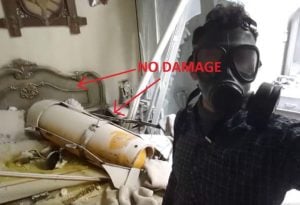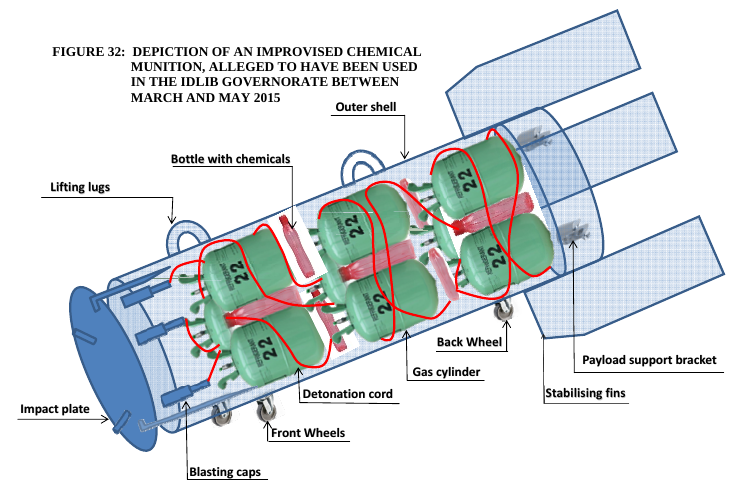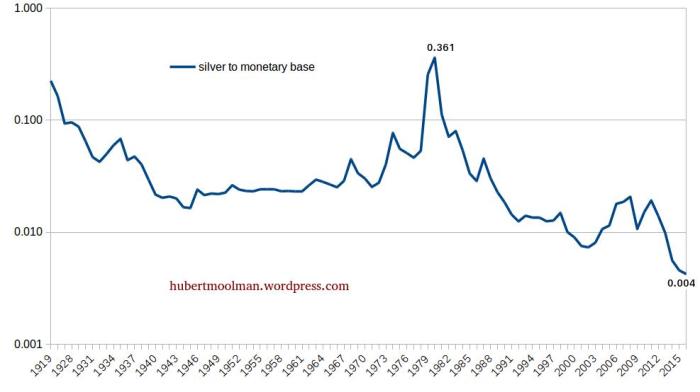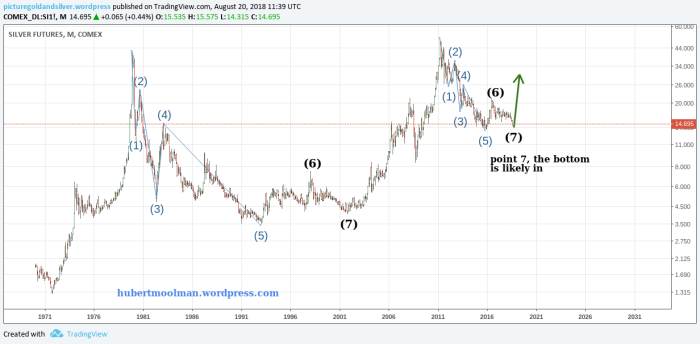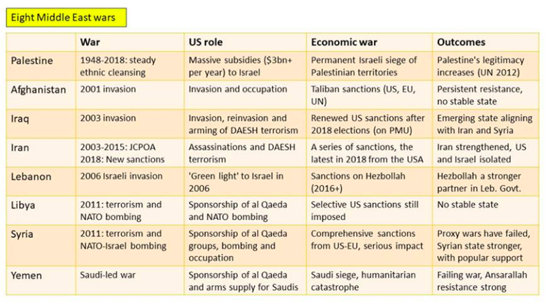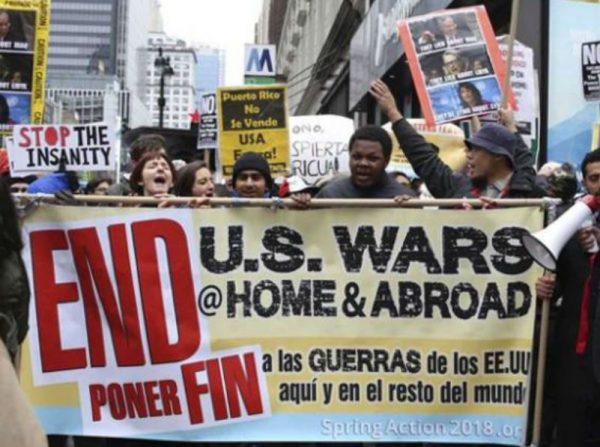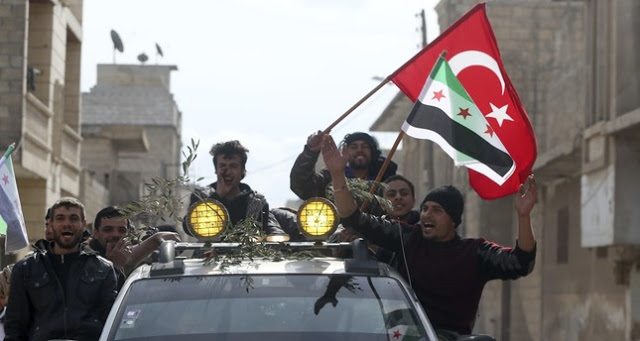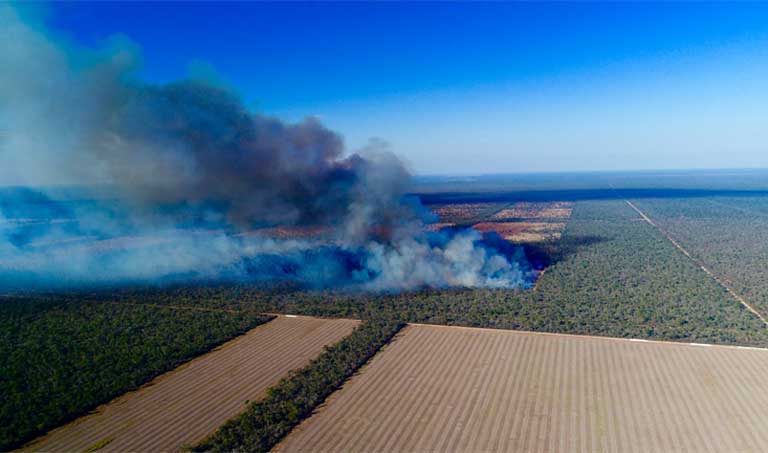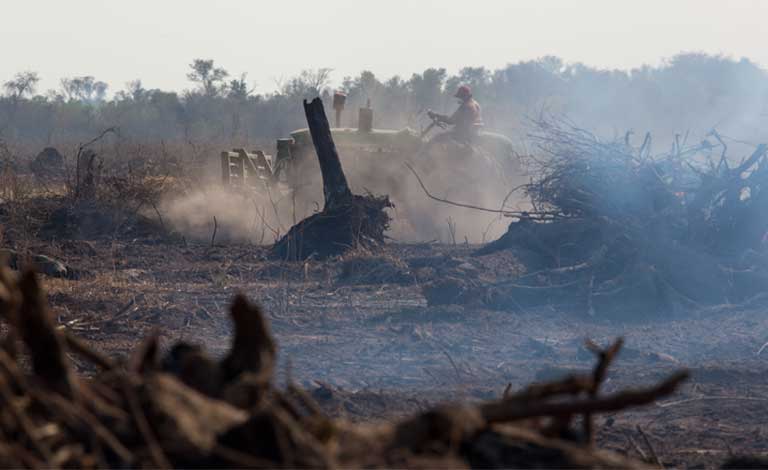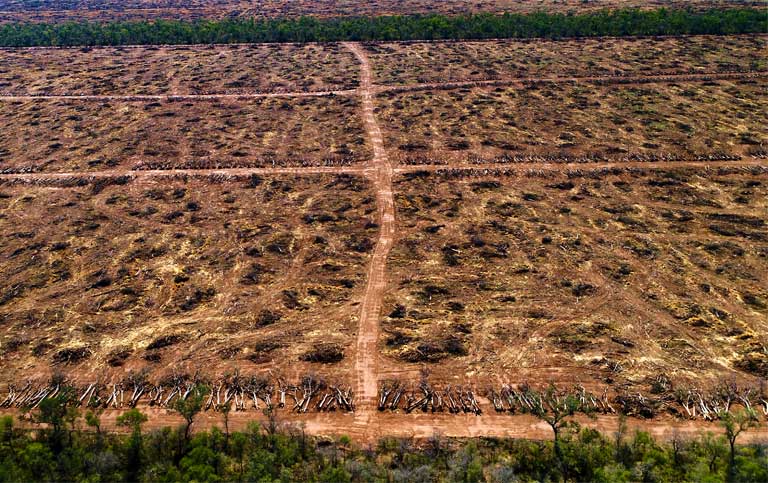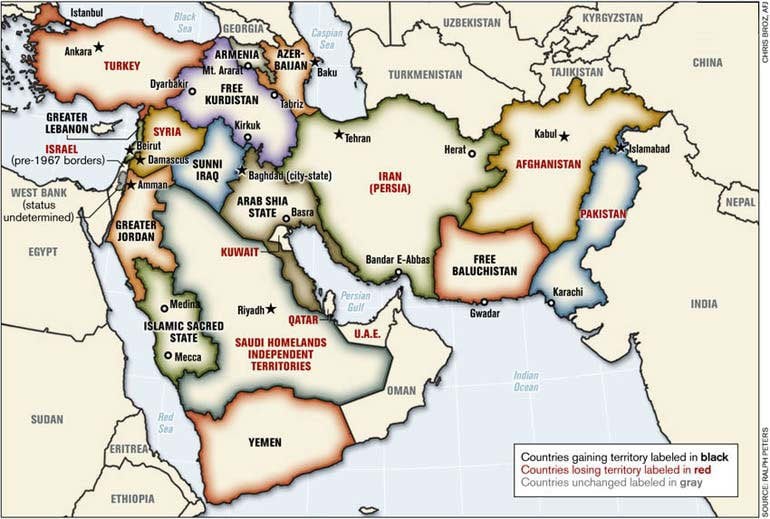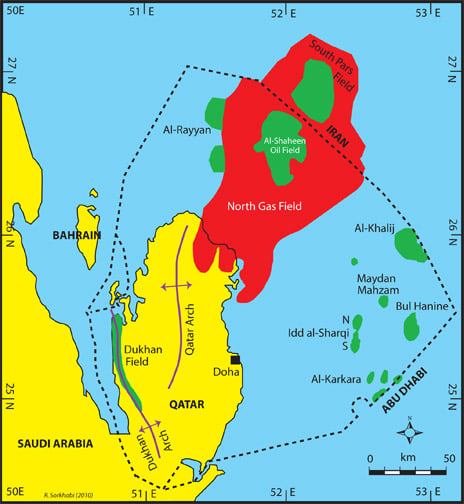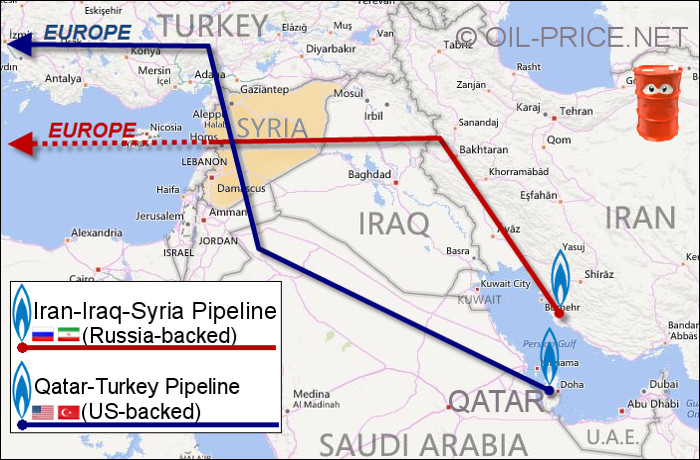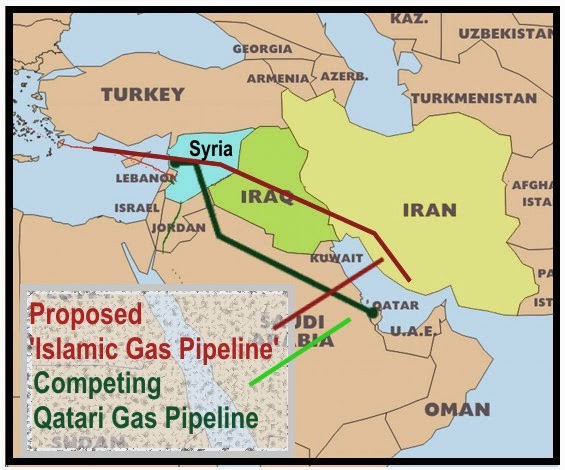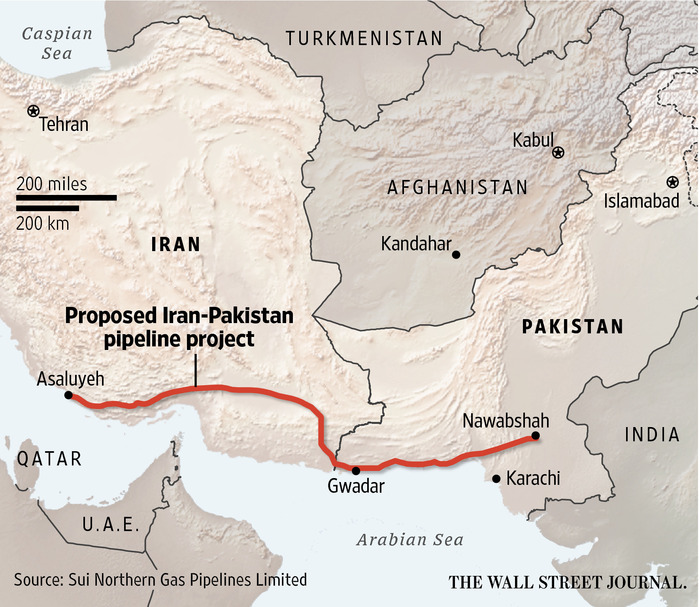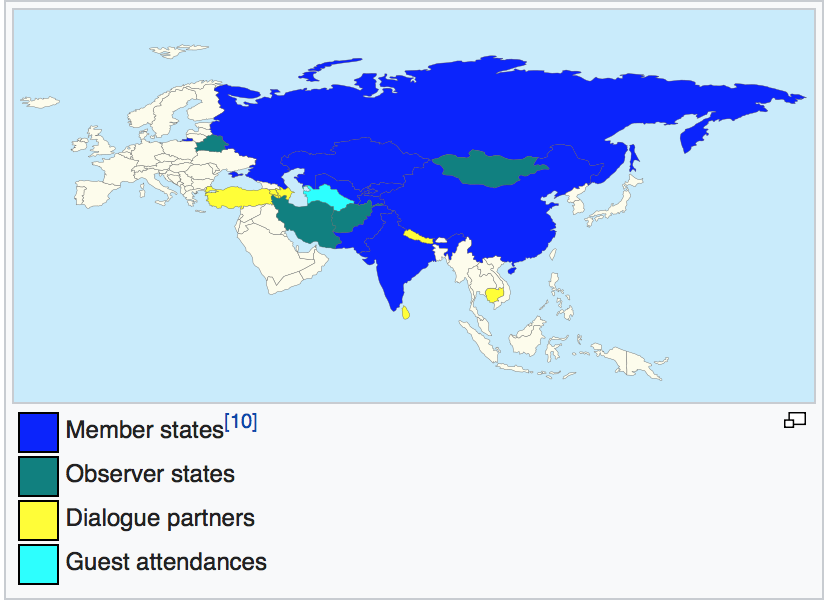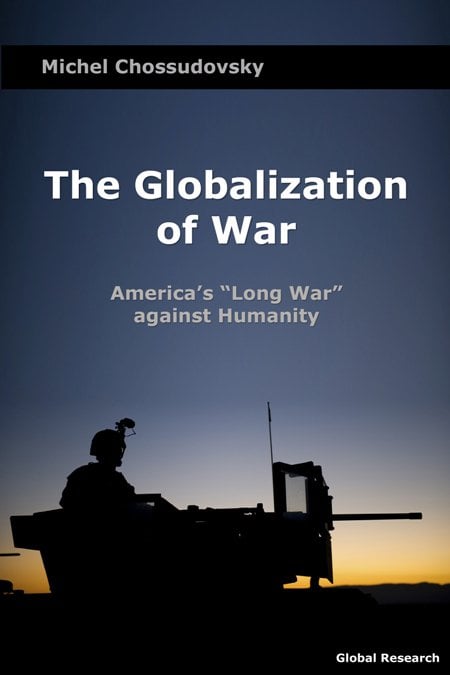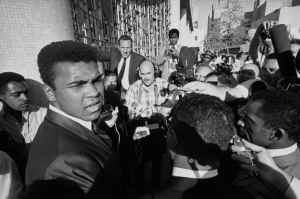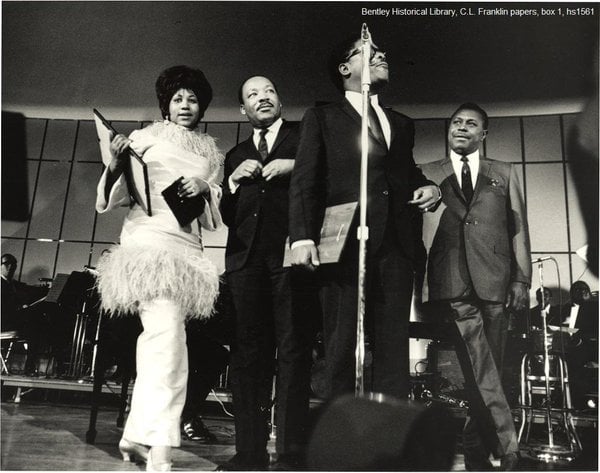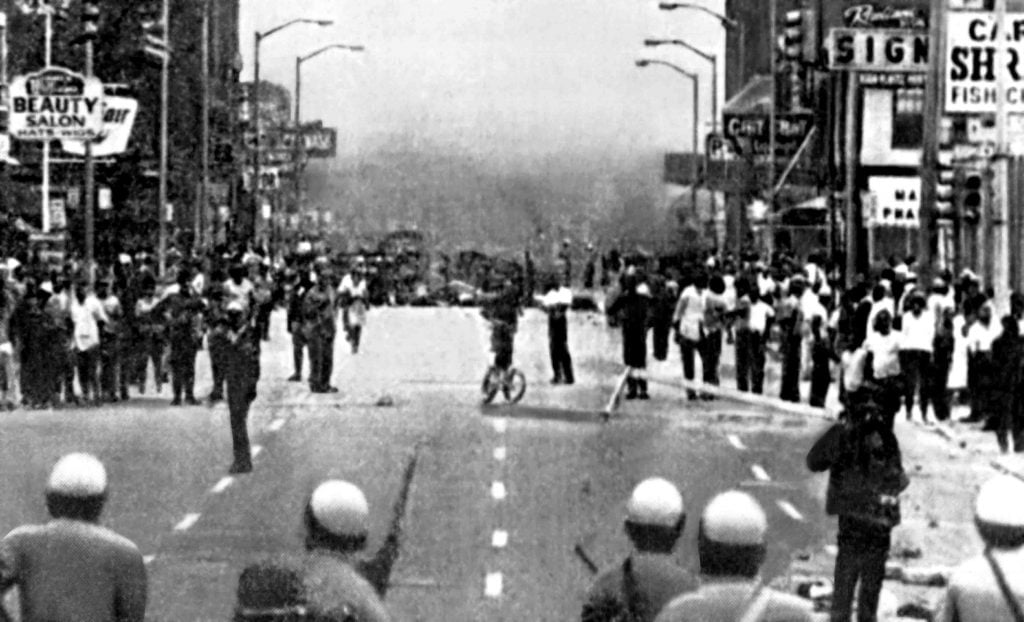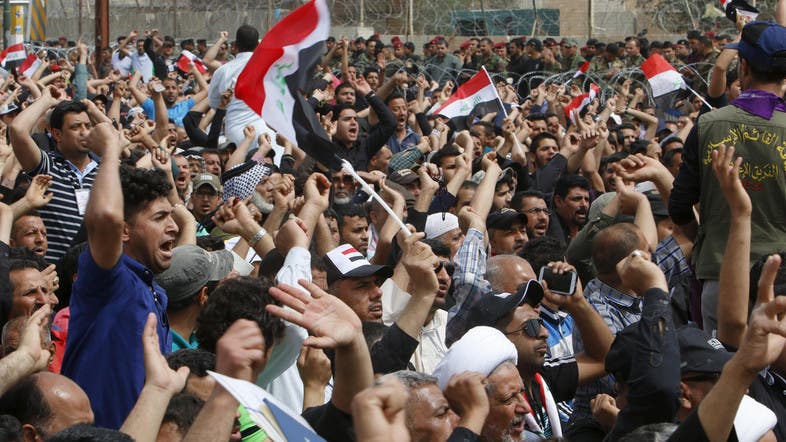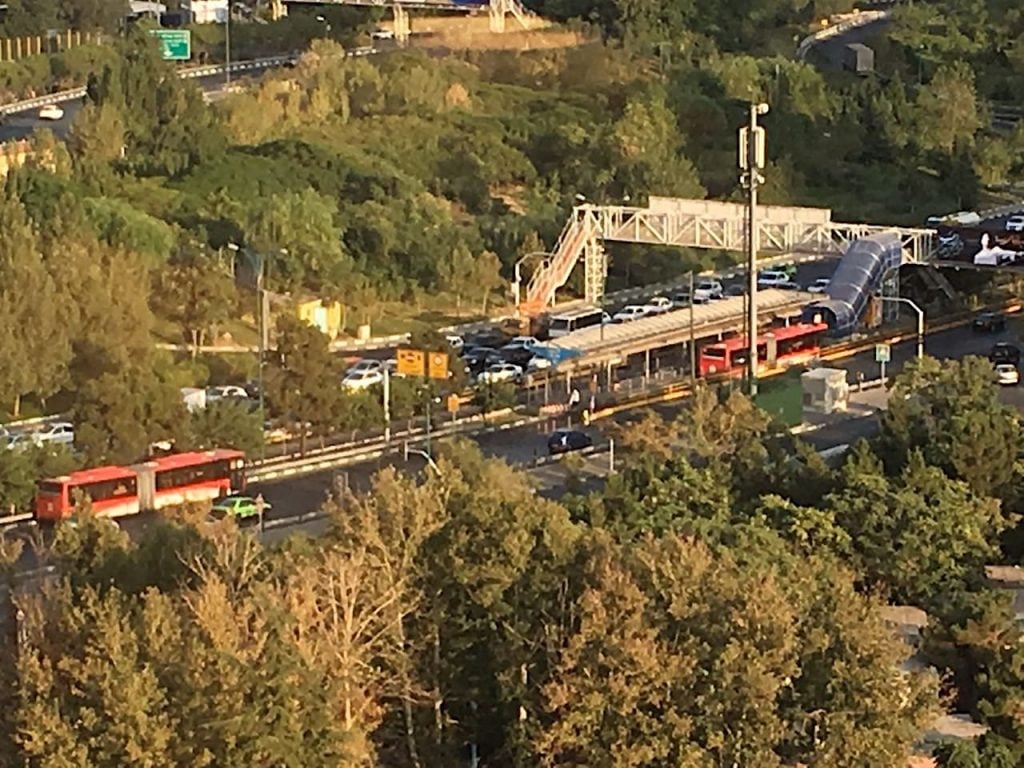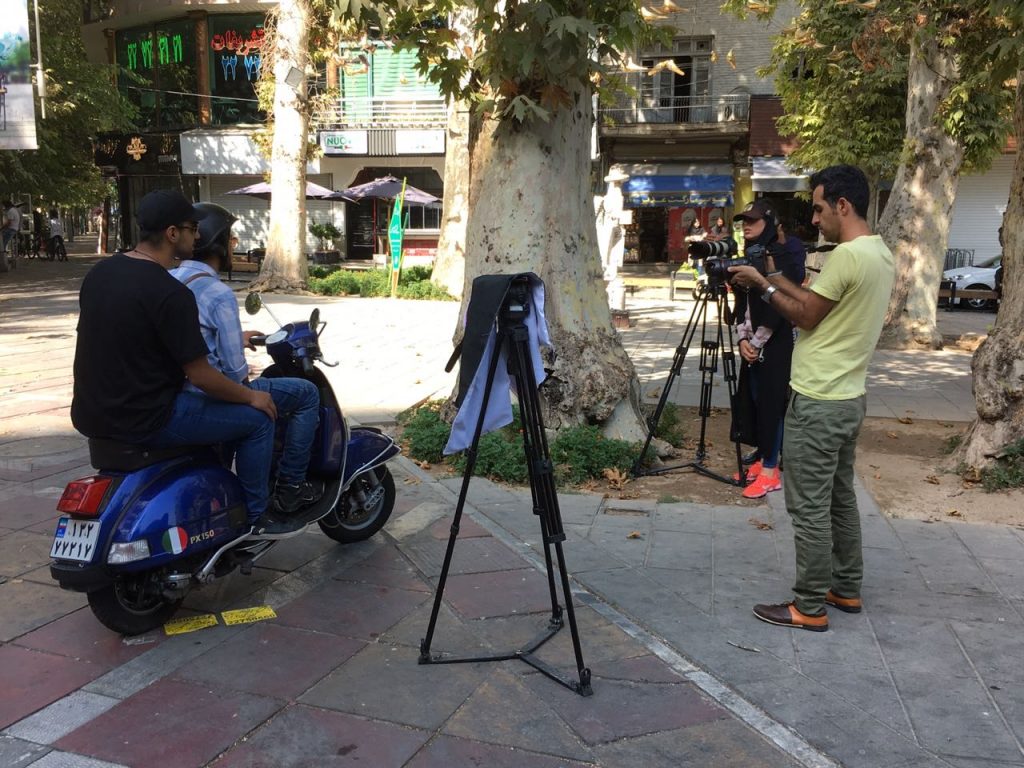Note to readers: please click the share buttons above
The nightmares that have shaped the past and await return slightly just below the surface of American society are poised to wreak havoc on us again. America has reached a distinctive crossroads in which the principles and practices of a fascist past and neoliberal present have merged to produce what Philip Roth once called “the terror of the unforeseen.”
Since the 1970s, American society has lived with the curse of neoliberalism, or what can be called the latest and most extreme stage of predatory capitalism. As part of a broader comprehensive design, neoliberalism’s overriding goal is to consolidate power in the hands of the financial elite. As a mode of rationality, it functions pedagogically in multiple cultural sites to ensure no alternatives to its mode of governance can be imagined or constructed.
Central to its philosophy is the assumption the market drives not just the economy but all of social life. It construes profit-making as the essence of democracy and consuming as the only operable form of agency. It redefines identities, desires and values through a market logic that favors self-interest, a survival-of-the-fittest ethos and unchecked individualism. Under neoliberalism, life-draining and unending competition is a central concept for defining human freedom.
Neoliberalism: Free Rein to Finance Capital and All-Encompassing Market
As an economic policy, it creates an all-encompassing market guided by the principles of privatization, deregulation, commodification and the free flow of capital. Advancing these agendas, it weakens unions, radically downsizes the welfare state and wages an assault on public goods. As the state is hollowed out, big corporations take on the functions of government, imposing severe austerity measures, redistributing wealth upward to the rich and powerful and reinforcing a notion of society as one of winners and losers. Put simply, neoliberalism gives free rein to finance capital and seeks to liberate the market from any restraints imposed by the state. At present, governments exist preeminently to maximize the profits, resources and the power of the wealthy.
As a political policy, it empties governance of any substance and denounces any viable notion of the social contract. Moreover, neoliberalism produces widespread misery and suffering as it weakens any vestige of democracy that interferes with its vision of a self-regulating market.
Theoretically, neoliberalism is often associated with the work of Friedrich August von Hayek and the Mont Pelerin Society, Milton Friedman and the Chicago school of economics, and most famously with the politics of Augusto Pinochet in Chile, President Ronald Reagan in the United States and Prime Minister Margaret Thatcher in the United Kingdom. Politically, it is supported by various right-wing think tanks such as the Heritage Foundation and by billionaires such as the Koch brothers.
Neoliberalism’s hatred of democracy, the common good and the social contract has unleashed generic elements of a fascist past in which white supremacy, ultra-nationalism, rabid misogyny and immigrant fervor come together in a toxic mix of militarism, state violence and the politics of disposability. Modes of fascist expression adapt variously to different political historical contexts assuring racial apartheid-like forms in the postbellum U.S. and overt encampments and extermination in Nazi Germany. Fascism – with its unquestioning belief in obedience to a powerful strongman, violence as a form of political purification, hatred as an act of patriotism, racial and ethnic cleansing, and the superiority of a select ethnic or national group – has resurfaced in the United States. In this mix of economic barbarism, political nihilism, racial purity, economic orthodoxy and ethical somnambulance, a distinctive economic-political formation has been produced that I term neoliberal fascism.
Neoliberalism as the New Fascism
The war against liberal democracy has become a global phenomenon. Authoritarian regimes have spread from Turkey, Poland, Hungary and India to the United States and a number of other countries. Right-wing populist movements are on the march, spewing forth a poisonous mix of ultra-nationalism, white supremacy, anti-Semitism, Islamophobia and xenophobia. The language of national decline, humiliation and demonization fuels dangerous proposals and policies aimed at racial purification and social sorting while hyping a masculinization of agency and a militarism reminiscent of past dictatorships. Under current circumstances, the forces that have produced the histories of mass violence, torture, genocide and fascism have not been left behind. Consequently, it has been more difficult to argue that the legacy of fascism has nothing to teach us regarding how “the question of fascism and power clearly belongs to the present.”
Fascism has multiple histories, most connected to the failed democracies in Italy and Germany in the 1930s and the overthrow of democratic governments by the military such as in Argentina and Chile in the 1970s. Moreover, the history between fascism and populism involves a complex mix of relations over time. What is distinctive about this millennial fascism is its history of “a violent totalitarian order that led to radical forms of political violence and genocide” has been softened by attempts to recalibrate its postwar legacy to a less liberal democratic register. For instance, in Hungary, Turkey, Poland and a number of other emerging fascist states, the term “illiberal democracy” is used as code to allegedly replace a “supposedly outmoded form of liberal democracy.” In actuality, the term is used to justify a form of populist authoritarianism whose goal is to attack the very foundations of democracy. These fascist underpinnings are also expanding in the United States. In President Donald Trump’s bombastic playbook, the notion of “the people” has become a rhetorical tool to legitimize a right-wing mass movement in support of a return to the good old days of American Apartheid.

As the ideas, values and institutions crucial to a democracy have withered under a savage neoliberalism that has been 50 years in the making, fascistic notions of racial superiority, social cleansing, apocalyptic populism, hyper-militarism and ultra-nationalism have gained in intensity, moving from the repressed recesses of U.S. history to the centers of state and corporate power. Decades of mass inequality, wage slavery, the collapse of the manufacturing sector, tax giveaways to the financial elite and savage austerity policies that drive a frontal attack on the welfare state have further strengthened fascistic discourses. They also have redirected populist anger against vulnerable populations and undocumented immigrants, Muslims, the racially oppressed, women, LBGTQ people, public servants, critical intellectuals and workers. Not only has neoliberalism undermined the basic elements of democracy by escalating the mutually reinforcing dynamics of economic inequality and political inequality – accentuating the downhill spiral of social and economic mobility – it has also created conditions that make fascist ideas and principles more attractive.
Under these accelerated circumstances, neoliberalism and fascism conjoin and advance in a comfortable and mutually compatible movement that connects the worst excesses of capitalism with authoritarian “strongman” ideals – the veneration of war, a hatred of reason and truth; a celebration of ultra-nationalism and racial purity; the suppression of freedom and dissent; a culture that promotes lies, spectacles, scapegoating the other, a deteriorating discourse, brutal violence, and, ultimately, the eruption of state violence in heterogeneous forms. In the Trump administration, neoliberal fascism is on steroids and represents a fusion of the worst dimensions and excesses of gangster capitalism with the fascist ideals of white nationalism and racial supremacy associated with the horrors of the past. Neoliberal structural transformation has undermined and refigured “the principles, practices, cultures, subjects and institution of democracy understood as rule by the people.” Since the earlier ’70s, the neoliberal project has mutated into a revolt against human rights and democracy and created a powerful narrative that refigures freedom and authority so as to legitimize and produce massive inequities in wealth and power. Its practices of offshoring, restructuring everything according to the dictates of profit margins, slashing progressive taxation, eliminating corporate regulations, allowing unchecked privatization and the ongoing commercializing of all social interactions “inflicts alienating misery” on a polity newly vulnerable to fascist ideals, rhetoric and politically extremist movements.
Furthermore, the merging of neoliberalism and fascism has accelerated as civic culture is eroded, notions of shared citizenship and responsibility disappear, and reason and informed judgment are replaced by the forces of civic illiteracy. State-sanctioned attacks on the truth, facts and scientific reason in Trump’s America are camouflaged as one would expect when led by the first reality TV president – by a corporate-controlled culture of vulgarity that merges celebrity culture with a nonstop spectacle of violence. Neoliberalism strips democracy of any substance by promoting an irrational belief in the ability of the market to solve all social problems and shape all aspects of society. This shift from a market economy to a market-driven society has been accompanied by a savage attack on equality, the social contract and social provisions as wages have been gutted, pensions destroyed, health care put out of reach for millions, job security undermined, and access to crucial public goods such as public and higher education considerably weakened for the lower and middle classes.
In the current historical moment, neoliberalism represents more than a form of hyper-capitalism, it also denotes the death of democracy if not politics itself. Anis Shivani’s articulation of the threat neoliberalism poses to democracy is worth quoting at length:
“Neoliberalism believes that markets are self-sufficient unto themselves, that they do not need regulation, and that they are the best guarantors of human welfare. Everything that promotes the market, i.e., privatization, deregulation, mobility of finance and capital, abandonment of government-provided social welfare, and the reconception of human beings as human capital, needs to be encouraged, while everything that supposedly diminishes the market, i.e., government services, regulation, restrictions on finance and capital, and conceptualization of human beings in transcendent terms, is to be discouraged… One way to sum up neoliberalism is to say that everything – everything – is to be made over in the image of the market, including the state, civil society, and of course human beings. Democracy becomes reinterpreted as the market, and politics succumbs to neoliberal economic theory, so we are speaking of the end of democratic politics as we have known it for two and a half centuries.”
What is particularly distinctive about the conjuncture of neoliberalism and fascism is how the full-fledged liberation of capital now merges with an out-and-out attack on the racially oppressed and vulnerable populations considered disposable. Not only do the oppressive political, economic and financial structures of casino capitalism bear down on people’s lives, but there is also a frontal attack on the shared understandings and beliefs that hold a people together. One crucial and distinctive place in which neoliberalism and fascism converge is in the undermining of social bonds and moral boundaries. Displacement, disintegration, atomization, social isolation and deracination have a long history in the United States, which has been aggressively exploited by Trump, taking on a distinctively right-wing, 21st-century register. There is more at work here than the heavy neoliberal toll of social abandonment. There is also, under the incessant pedagogical propaganda of right-wing and corporate controlled media, a culture that has become cruel and cultivates an appetite for maliciousness that undermines the capacity for empathy, making people indifferent to the suffering of others or, even worse, willing participants in their violent exclusion.
Irish journalist Fintan O’Toole warns that fascism unravels the ethical imagination through a process in which individuals eventually “learn to think the unthinkable…” followed, he writes, “by a crucial next step, usually the trickiest of all”:
“You have to undermine moral boundaries, inure people to the acceptance of acts of extreme cruelty. Like hounds, people have to be blooded. They have to be given the taste for savagery. Fascism does this by building up the sense of threat from a despised out-group. This allows the members of that group to be dehumanized. Once that has been achieved, you can gradually up the ante, working through the stages from breaking windows to extermination.”
What is often labeled as an economic crisis in American society is also a crisis of morality, sociality and community. Since the 1970s, increasing unregulated capitalism has hardened into a form of market fundamentalism that has accelerated the hollowing out of democracy through its capacity to reshape the commanding political, social and economic institutions of American society, making it vulnerable to the fascist solutions proposed by Trump. As an integrated system of structures, ideologies and values, neoliberalism economizes every aspect of life, separates economic activity from social costs, and depoliticizes the public through corporate-controlled disimagination machines that trade in post-truth narratives, enshrine the spectacle of violence, debase language and distort history.
Neoliberalism now wages a battle against any viable notion of the social contract, solidarity, the collective imagination, the public good and the institutions that support them. As the realm of the political is defined in strictly economic terms, the institutions, public goods, formative cultures and modes of identity essential to a democracy disappear, along with the informed citizens necessary to sustain them.
The Crisis of Reason and Fantasies of Freedom
As more and more power is concentrated in the hands of a corporate and financial elite, freedom is defined exclusively in market terms, inequality is cast as a virtue, and the logic of privatization heaps contempt upon civic compassion and the welfare state. The fatal after-effect is that neoliberalism has emerged as the new face of fascism. With the 50-year advance of neoliberalism, freedom has become its opposite. And democracy, once the arc of civic freedom, now becomes its enemy, because democratic governance no longer takes priority over the unchecked workings of the market. Neoliberalism undermines both the social and the public and in doing so weakens the idea of shared responsibilities and moral obligations. As Zygmunt Bauman argues “ethical tranquillization” is now normalized under the assumption that freedom is limited to the right to only advance one’s own interests and the interests of the markets. Freedom in the neoliberal playbook disavows any notion of responsibility outside of the responsibility to oneself.
As Wendy Brown argues, politics and democracy are now viewed as the enemy of markets and “politics is cast as the enemy to freedom, to order and to progress.” Politics now becomes a mix of regressive notions of freedom and authority whose purpose is to protect market-driven principles and practices. What disappears in this all-encompassing reach of capital is the notion of civic freedom, which is replaced by securitization organized to protect the lawless workings of the profit motive and the savagery of neoliberal austerity policies. Moreover, as freedom becomes privatized, it feeds a lack of interest in politics and breeds moral indifference. As a consequence, neoliberalism unleashes the passions of a fascist past in which the terrain of politics, agency and social relations begin to resemble a war zone, a blood sport and a form of cage fighting.
In this instance, the oppressed are not only cheated out of history, they are led to believe that under neoliberal fascism there are no alternatives and the future can only imitate the present. Not only does this position suppress any sense of responsibility and resistance, it produces what Timothy Snyder calls “a kind of sleepwalking, and has to end with a crash.” The latter is reinforced by a government that believes truth is dangerous and reality begins with a tweet that signals the legitimation of endless lies and forms of power that infantilize and depoliticize, because they leave no room for standards of language capable of holding power accountable. Even worse, Trump’s war on language and truth does more than limit freedom to competing fictions, it also erases the distinction between moral depravity and justice, good and evil. As I have said elsewhere, “Trump’s Ministry of Fake News works incessantly to set limits on what is thinkable, claiming that reason, evidence, consistency, and logic no longer serve the truth, because the latter are crooked ideological devices used by enemies of the state. ‘Thought crimes’ are now labeled as ‘fake news.’”
Timothy Snyder is right in arguing that “to abandon facts is to abandon freedom. If nothing is true, then no one can criticize power, because there is no basis upon which to do so. If nothing is true, then all is spectacle.” The post-truth society is a state-sponsored diversion and spectacle. Its purpose is to camouflage a moral and political crisis that has put into play a set of brutal neoliberal arrangements. Rather than view truth as the currency of democracy, Trump and his acolytes view it and democracy as the enemy of power. Such arrangements put democracy at risk and create an educational and political project receptive to the political currency of white supremacy. As a master of schlock performance, Trump tweets and speaks largely to his angry, resentful base, often using crude language in which the threat of violence and repression appears to function for his audience as a source of “romance, pleasure and fantasy.” These core supporters represent, at best, what Philip Roth once generously called the “uneducated and overburdened.” But they also cultivate what Erin Aubry Kaplan calls “the very worst American impulses, from xenophobia to know-nothingism to disdain for social necessities such as public education and clean water, [and their] signature quality is racism.”
Restaging Fascism Within Democracy
Rather than disappear into the memory hole of history, fascism has reappeared in a different form in the United States, echoing Theodor Adorno’s warning, “I consider the survival of National Socialism within democracy to be potentially more menacing than the survival of fascist tendencies against democracy.”Theorists, novelists, historians and writers that include such luminaries as Hannah Arendt, Sinclair Lewis, Bertram Gross, Umberto Eco, Robert O. Paxton, Timothy Snyder, Susan Sontag and Sheldon Wolin have argued convincingly that fascism remains an ongoing danger and has the ability to become relevant under new conditions. After the fall of Nazi Germany, Arendt warned totalitarianism was far from a thing of the past because the conditions of extreme precarity and uncertainty that produce it were likely to crystallize into new forms.
What Arendt thought was crucial for each generation to recognize was that the presence of the Nazi camps and the policy of extermination should be understood not only as the logical outcome of a totalitarian society or simply a return of the past, but also for what their histories suggest about forecasting a “possible model for the future.” The nightmare of fascism’s past cannot escape memory because it needs to be retold over and over again so as to recognize when it is happening again. Rather than fade into the past, mass poverty, unchecked homelessness, large-scale rootlessness, fearmongering, social atomization, state terrorism and the politics of elimination have provided the seeds for new forms of fascism to appear. Paxton, the renowned historian of fascism, argues in his “The Anatomy of Fascism” that the texture of American fascism would not mimic traditional European forms but would be rooted in the language, symbols and culture of everyday life:
“No swastikas in an American fascism, but Stars and Stripes (or Stars and Bars) and Christian crosses. No fascist salute, but mass recitations of the Pledge of Allegiance. These symbols contain no whiff of fascism in themselves, of course, but an American fascism would transform them into obligatory litmus tests for detecting the internal enemy.”
Given the alarming signs that have come into play under the Trump administration, it is hard to look away and condone the suppression of the history and language of fascism and its relevance for understanding America’s flight from the promise and ideals of a substantive democracy. This is not to suggest the only template for addressing the legacy of fascism is to point to Nazi Germany, the most extreme of the fascist states, or, for that matter, to Mussolini’s brand of fascism. Not only does the comparison not work, but it tends to understand fascist ideals only against its most extreme expressions.
While it is true the U.S. may not be putting millions in gas chambers or promoting genocide, there remain reworked elements of the past in the present. For instance, there are already echoes of the past in existing and expanding infrastructures of punishment – amounting to a carceral state – that have grown exponentially in the past four decades. In fact, the United States has the largest prison system in the world, with more than 2.5 million people incarcerated. Astonishingly, this figure does not include immigrant detention centers and other forms of encampment around the U.S. border with Mexico. The visibility of this state-sanctioned punishing apparatus and its similarity to a fascist history was on display recently with the caging of young immigrant children who were forcibly separated from their parents at the southern border for months at a time. Needless to say, such institutions and actions resonate with deeply disturbing events of a dark past for which the violent separation of families was a hallmark feature of fascist brutality.
Reports of widespread abuse of imprisoned unaccompanied migrant children separated from their parents are increasingly being reported in the press. Detained under inhumane and cruel conditions, many of these children in government detention centers are allegedly being drugged, sexually abused, and subject to a range of inhumane actions. In Texas, a federal judge ordered a detention center to stop forcing children to take psychotropic drugs such as Clonazepam, Divalproex, Benztropine and Duloxetine in order to control their behavior. Needless to say, such actions, policies, and institutions resonate with deeply disturbing events of a dark past in which the violent separation of families was a hallmark feature of fascist cruelty, barbarism and brutality.
It is against this background that I believe the current debates that dismiss whether the U.S. under Trump is a fascist society are unproductive. The argument against this recognition generally proceeds by claiming either fascism is a relic of the past, fixed in a certain historical period with no relevance to the present, or that the differences between Trump’s policies and those of Hitler and Mussolini are enough so as to make any comparison irrelevant. Many commentators denounce any references to Trump and Nazis in the past as exaggerated, extreme or inapplicable. In this view, fascism is always somewhere else, relegated to a time and a place that suggests an accommodating distance, one that runs the risk of disconnecting historical memory and the horrors of another age from the possibility of fascism resurrected in a different form, newly attuned to its moment. We live in an age in which there is a terror on the part of critics to imagine the plasticity of fascism.
The Mobilizing Passions of Fascism
Fascism is neither a static nor fixed moment in history, and the forms it takes do not have to imitate earlier historical models. It is an authoritarian ideology and a form of political behavior defined by what Paxton calls a series of “mobilizing passions.” These include an open assault on democracy, the call for a strongman, a contempt for human weakness, an obsession with hyper-masculinity, an aggressive militarism, an appeal to national greatness, a disdain for the feminine, an investment in the language of cultural decline, the disparaging of human rights, the suppression of dissent, a propensity for violence, disdain for intellectuals, a hatred of reason, and fantasies of racial superiority and eliminationist policies aimed at social cleansing.
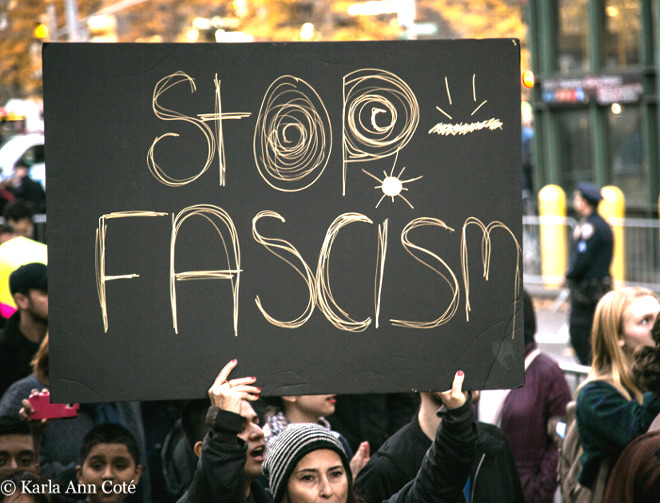
The ghost of fascism has to be retrieved from history and restored to a “proper place in the discussions of the moral and political limits of what is acceptable,” especially at a moment when the crisis of democracy cannot be separated from the crisis of neoliberalism. As a heuristic tool to compare forms of state power, the legacy of fascism offers an opportunity to recognize when authoritarian signposts are on the horizon.
For example, under Trump, the spectacle reigns supreme, harking back to an earlier time in history when bravado, armed ignorance and theatrical performances provided a model of community that squelched memory, domesticated thought and opened the door for a strongman’s followers to disavow their role as critical agents in favor of becoming blind, if not willful, spectators. With regards to the present, it is crucial to recognize the ascendancy of Trump politically within rather than against the flow of history.
Fascism in the United States has arrived slowly by subversion from within. Its roots have been on display for decades and emerged most visibly with President George W. Bush’s and then President Barack Obama’s war on terror. Bush, in particular, embraced unapologetically a raw display of power that sanctioned torture, domestic spying, secret prisons, kill lists, laws sanctioning indefinite detention, warrantless searches and war crimes. Obama did little to correct these legal illegalities and Trump has only breathed new life into them. Instead of the sudden appearance on American streets of thugs, brown shirts, purges and massive state violence – the state violence waged against African Americans notwithstanding – fascism has been resurrected through the enabling force of casino capitalism, which has unleashed and mobilized a range of economic, political, religious and educational fundamentalisms.
This is most obvious in the subversion of power by the financial and corporate robber barons, the taming of dissent, the cultivation of tribal identities, the celebration of orbits of self-interests and hyper-individualism over the common good, the privatization and deregulation of public life and institutions, the legitimation of bigotry and intolerance, the transformation of elections into a battle among billionaires, and the production of a culture of greed and cruelty. But, as political theorist Wendy Brown makes clear, it is also obvious in a populist revolt generated by neoliberalism’s decimation of “livelihoods and neighborhoods,” “evacuating and delegitimizing democracy,” “devaluing knowledge apart from job training,” and the “eroding of national sovereignty.”
Orthodoxy, especially under Trump, has transformed education into a workstation for ignorance in which harsh discipline is metered out to poor students and youths of color. Politics has been utterly corrupted by big money and morally deficient bankers, hedge fund managers and corporate moguls. And many evangelicals and other religious groups support, or are complicit with, a president who sides with white supremacists and trades in the language of viciousness and brutality.
The corporate state, fueled by a market fundamentalism and a long legacy of racial apartheid, has imposed almost incomprehensible cruelty on poor and vulnerable black populations. The merging of neoliberalism and fascist elements of white supremacy and systemic racism is particularly evident in the environmental racism, dilapidated schools and air pollution that have come to light recently. The short list includes going so far as to sacrifice poor black children in Flint, Mich., to the perils of lead poisoning to increase profits, subject the population of Puerto Rico to unnecessary despair by refusing to provide adequate government services after Hurricane Maria, and creating conditions in which “America’s youngest children, some 47 per cent” under the age of 5, “live in low-income or poor households.” W.E.B. Du Bois’ notion of a “racial dictatorship” in his classic Black Reconstruction in America has been resurrected under Trump.
As U.N. Special Rapporteur Philip Alston reported, amid a massive concentration of wealth among the upper 1 per cent in the United States, 40 million people live in poverty and 18.5 million Americans live in extreme poverty. According to Alston, such neoliberal policies are “aggressively regressive” in their promoting of harsh work requirements for welfare recipients, cutting back programs to feed poor children, and the willingness to both incarcerate young children and separate them from their parents. All the while, the Trump administration has shifted massive resources to the wealthy as a result of a tax policy that shreds $1.5-trillion from the federal budget.
Since the 1970s, wages have stagnated, banks have cheated millions out of their homes through rigged mortgage policies, and the political power brokers have imposed financial ruin on minorities of class and race. The war against poverty initiated by President Lyndon B. Johnson’s administration had been transformed into a war on poverty by President Ronald Reagan and has accelerated and achieved its apotheosis under the Trump regime. With a pathological enthusiasm, Trump’s morally bereft Republican Congress has cut crucial benefits for the poor, such as the food stamp program, while also imposing harsh work requirements on Medicare recipients. There is more at work here than the self-serving and vindictive neoliberal belief that government is bad when it gets in the way of markets and does not serve the interest of the rich. There is also willfully savage support for massive degrees of inequality, human wretchedness, the criminalization of social problems, and a burgeoning culture of punishment, misery and suffering.
One consequence is a beleaguered American landscape marked by the growing opioid crisis, the criminalization of peaceful protests, race-based environmental poisoning, shorter longevity rates for middle-aged Americans, and an incarceration rate that ranks as the highest in the world. The war on democracy has also morphed into a war on youth as more and more children are homeless, subjected to mass school shootings, inhabit schools modeled after prisons, and increasingly ushered into the school-to-prison pipeline and disciplinary apparatuses that treats them as criminals. Under the long history of neoliberalism in the United States, there has developed a perverse investment in the degradation and punishment of the most vulnerable individuals, those considered other, and an increasing register of those considered disposable.
Rethinking the Politics of Inverted Totalitarianism
What is crucial to understand is that neoliberalism is not only a more extreme element of capitalism, it has also enabled the emergence of a radical restructuring of power, the state and politics, and in doing so converges with a style of fascism suited to the American context. Political theorist Sheldon Wolin, in his book “Democracy Incorporated,” was one of the first to analyze the transformation of a capitalist democracy into what he called an inverted form of totalitarianism. According to Wolin, the political state was replaced by a corporate state that exploits all but the ruling classes, empties politics of any substance through rigged elections, uses the power of capital to define citizens largely as consumers of products, and applies the power of the corporate state as a battering ram to push through policies that strengthen the power of capital.
For Wolin, neoliberalism was the endpoint of a long process “to transform everything – every object, every living thing, every fact on the planet – in its image.” He believed that this new political formation and form of sovereignty in which economics dominated politics was hostile to both social spending and the welfare state. Wolin rightly argued that under neoliberalism, political sovereignty is largely replaced by economic sovereignty as corporate power takes over the reins of governance.
The dire consequence, as David Harvey points out, is that “raw money power wielded by the few undermines all semblances of democratic governance.” Policy is now fashioned by lobbyists representing big businesses such as the pharmaceutical and health insurance companies, going so far in the case of the drug companies to drive the opioid crisis to increase their profits.
Under neoliberalism, the welfare state has been largely dismantled, while the power of a punishing apparatus of an emerging police state has been expanded, buttressed by a pervasive culture of fear that exempts itself from the legalities and constitutional obligations of a democracy, however neutered. Wolin was keenly aware of the ruthlessness of corporate culture in its willingness to produce striking inequalities in an epical war on the promise and ideals of a substantive democracy.
Wolin’s great contribution to theories of totalitarianism lies in his ability to lay bare the authoritarian economic tendencies in neoliberalism and its threat to democracy. What he did not do is associate neoliberalism and its enervating effects closely enough with certain legacies of fascism. In this absence, he was unable to predict the resurgence of strongman politics in the United States and the ascendant fascist investments in white supremacy, racial sorting, ultra-nationalism, a war on youth, women’s reproductive rights and a race-inspired, eliminationist politics of disposability. What he underemphasized was that neoliberalism impoverished not only society economically while serving the interests of the rich, but it also created a powerful narrative that normalizes political inaction as it shifted the weight and responsibility of all social problems onto the individual rather than the society.
In the age of neoliberal myth-making, systemic deficiencies such as poverty, homelessness and precarious employment are now relegated to individual failures, character deficits and moral turpitude. Correspondingly, notions of the social, systemic and public disappear, serving to expand the base of those who feel voiceless and powerless, opening them up to the crude and simplistic emotional appeals of authoritarian figures such as Trump. In truly demagogic fashion, Trump promises a new world order that will be fashioned out of the rhetorical bombast of dehumanization, bigotry and a weaponized appeal to fear and hate. As the poor and discarded vanish from the political discourse of democracy, they become susceptible to a “volatility and the fury that [mutilates] contemporary politics that thrives on an appetite for authoritarian and fascistic impulses.”
Fascism by Trial in the Age of Trump
In a thoughtful analysis, the Irish journalist O’Toole asserts neoliberalism creates the conditions for enabling what he calls a trial run for a full-blown state of contemporary fascism:
“To grasp what is going on in the world right now, we need to reflect on two things. One is that we are in a phase of trial runs. The other is that what is being trialed is fascism – a word that should be used carefully but not shirked when it is so clearly on the horizon. Forget ‘post-fascist’ – what we are living with is pre-fascism. Rather than overthrow democracy in one full swipe, it has to be undermined through rigged elections, the creation of tribal identities, and legitimated through a ‘propaganda machine so effective that it creates for its followers a universe of “alternative facts” impervious to unwanted realities.’ …. Fascism doesn’t arise suddenly in an existing democracy. It is not easy to get people to give up their ideas of freedom and civility. You have to do trial runs that, if they are done well, serve two purposes. They get people used to something they may initially recoil from, and they allow you to refine and calibrate. This is what is happening now and we would be fools not to see it.”
Ultra-nationalist and contemporary versions of fascism are gaining traction across the globe in countries such as Greece (Golden Dawn), Hungary (Jobbik), India (Bharatiya Janata Party), and Italy (the League) and countless others. Needless to say, they have been emboldened by Trump, who has displayed a close admiration for authoritarian leaders such as Russia’s Vladimir Putin, Turkey’s Recep Tayyip Erdogan and China’s Xi Jinping. He recently praised North Korean leader Kim Jong-un for his “intellect and personality” and without irony stated “He speaks and his people sit up at attention. I want my people to do the same.”
Trump also has used his power to pardon people such as right-wing pundit Dinesh D’Souza and former Arizona sheriff Joe Arpaio, who defied court orders to stop racially profiling Latinos. He has publicly accused Democrats in Congress for not standing following his State of the Union address and has conducted a foreign policy that trashes Western allies while celebrating authoritarian strongmen.
In addition, Trump consistently promotes extremist policies and surrounds himself with far- right-wing ideologues such as Attorney General Jeff Sessions, National Security Adviser John Bolton and senior adviser Stephen Miller – all hard-liners on just about every issue. Steve Bannon’s early presence in the Trump administration was symbolic of the extremism Trump brought to the White House. Bannon, who served as former senior counselor to the president, ran Breitbart, a white nationalist tabloid. Now freelancing, Bannon continues to normalize white supremacist ideas in his endless speeches and public appearances. Trump shares Bannon’s allegiance to white supremacy and has relentlessly catered to the racial fears and economic anxieties of an abandoned white working class. Moreover, he has created a new synergy between his authoritarian demagoguery and an array of fascist groups that include the alt-right, white nationalists, militia groups and others who embrace his militarism, race-based law and order agenda and his overt contempt of undocumented immigrants and Muslims.
Trump has elevated himself as the patron saint of a ruthless neoliberalism. This is evident in the various miracles he has performed for the rich and powerful. He has systemically deregulated regulations that extend from environmental protections to worker safety rules. He has enacted a $1.5-trillion tax policy that amounts to a huge gift to the financial elite and all the while maintaining his “man of the people” posture. He has appointed a range of neoliberal fundamentalists to head major government posts designed to serve the public. Most, like Scott Pruitt, the former head of the Environmental Protection Agency, and Betsy DeVos, the secretary of Education, have proved to be either corrupt, incompetent, or often both. Along with the Republican Congress, Trump has vastly increased the military budget to $717-billion, creating huge financial profits for the military-industrial-defense complex while instituting policies that eviscerate the welfare state and further expand a war machine that generates mass suffering and death.
Trump has reduced food assistance for those who are forced to choose between eating and taking medicine, and his policies have prevented millions from getting adequate health care. Last but not least, he has become a cheerleader for the gun and security industries going so far as to call for the arming of teachers as a way to redress mass shootings in the nation’s schools. All of these policies serve to unleash the anti-liberal and anti-democratic passions, fears, anxieties and anger necessary to mainstream fascism.
Trump’s Politics of Disposability
Trump’s neoliberalism aligns with fascism particularly through his embrace of white supremacy and his commitment to an expanding notion of disposability. Trump’s view of disposability takes on a double register. First, he produces economic policies that support the neoliberal conviction that human beings without economic value, those who make no contribution to the market, are refuse, waste and excess, and have no possible social use. In neoliberalism’s survival-of-the-fittest ethos, which amounts to a form of econocide, redundancy becomes code for disposability in economic terms. The only relations that matter are those compatible with economic decision making and the imperatives of capital. As Anis Shivani observes, “Anyone not willing to conceive of themselves as being present fully and always in the market,” who presents a burden to the state, or refuses “to invest in their own future… will be subject to discipline and refused recognition as [a] human being.”
Trump extends the logic of redundancy and disposability beyond economic categories to all those others who cannot fit into a white nationalist script. This is the language of the police state – one fashioned by the history of U.S. apartheid. The endpoint of the language of white supremacy via a regressive crime policy is a form of social death, or even worse. What is frightening about Trump’s racist vocabulary is that it registers a move from the coded language of benign neglect to policies marked by malignant cruelty that legitimates state violence.
Trump’s allegiance to white supremacy is hard to miss, though many deny it by focusing more on his economic policies rather than his white supremacist agenda. Ta-Nehisi Coates offers an insightful analysis of Trump’s white supremacist ideology:
“It is often said that Trump has no real ideology, which is not true – his ideology is white supremacy, in all its truculent and sanctimonious power. … His political career began in advocacy of birtherism, that modern recasting of the old American precept that black people are not fit to be citizens of the country they built. But long before birtherism, Trump had made his worldview clear. He fought to keep blacks out of his buildings, according to the U.S. government; called for the death penalty for the eventually exonerated Central Park Five; and railed against ‘lazy’ black employees. … Trump inaugurated his campaign by casting himself as the defender of white maidenhood against Mexican ‘rapists,’ only to be later alleged by multiple accusers, and by his own proud words, to be a sexual violator himself… In Trump, white supremacists see one of their own.”
Author John Feffer goes further and argues Trump’s hatred of immigrants is clear not only in his push for “extreme measures to keep them out of the United States: a wall, a travel ban, a zero-tolerance family-separation policy” but also signifies his view of them as a “threat that transcends the political. It’s a matter of blood and soil, the touchstones of extreme nationalism.” What Feffer fails to acknowledge is that Trump’s view of ethnic sorting is also reminiscent of a central policy of earlier forms of fascism. Under Trump’s “zero-tolerance” border crackdown, immigrant families in the language of a fascist past disappear, are lost or categorized as “deleted family units.”
The United States is in a dangerous moment in its history, which makes it all the more crucial to understand how a distinctive form of neoliberal fascism now bears down on the present and threatens to usher in a period of unprecedented barbarism in the not too distant future. In an attempt to address this new political conjuncture, I want to suggest that rather than view fascism simply as a repetition of the past, it is crucial to forge a new vocabulary and politics to grasp how neoliberal fascism has become a uniquely American model for the present. One way to address this challenge is to rethink what lessons can be learned by interrogating how matters of language and memory can be used to illuminate the dark forces connecting the past and present as part of the new hybridized political nightmare.
The Language of Fascism
Fascism begins not with violence, police assaults or mass killings, but with language. Trump reminded us of this in 2015 while announcing his candidacy for president. He stated, without irony or shame, that “when Mexico sends its people, they’re not sending the best. They’re sending people that have lots of problems and they’re bringing those problems. They’re bringing drugs, they’re bringing crime. They’re rapists and some, I assume, are good people…” This is more than the language of polarization or a strategic dog whistle, it is an overt discourse and theatrical performance in the service of white supremacy and racist violence, a logic largely missed by the mainstream press at the time. This initial blast of racist invective served to forecast how Trump’s campaign and presidency would appeal to white nationalists, the alt-right and other neo-Nazi groups.
The language of fascist violence takes many forms, and Trump provided another disturbing example of his use of language as a tool of power and domination that expands what earlier fascist regimes had done. Early in his presidency, Trump had his administration prohibit officials at the Centers for Disease Control from using words such as “vulnerable,” “entitlement,” “diversity,” “transgender,” “fetus,” “evidence-based” and “science-based.” Banning words such as “vulnerable,” “diversity” and “fetus” signals Trump’s war on empathy, equality and women’s reproductive rights. Soon afterward, the Trump administration started erasing all references to climate change and greenhouse gases from government websites as well as information about LGBTQ Americans.
Such actions share a legacy of state censorship, the repression of dissent by banishing freedom of speech and book burning, all of which were part of the playbook of fascist regimes. Author Ruth Ben-Ghiat is right in stating that each of the words on Trump’s censorship list “is part of an ongoing war about the future of our democratic rights to speak and research freely, to control our own bodies and identities, and to live without fear of being targeted by the state because of our faith, skin color, or sexual orientation.”
It is worth noting that words are not just about the production of meaning but also about how they generate consequences, especially in light of how such meanings – buttressed by state-sanctioned relations of power – function in a larger context. Some meanings have a force that others don’t, especially because power confers authority and can set in motion a range of effects. This is particularly clear in light of how Trump uses the power of the presidency at times when reacting to critics, especially those who garner some public attention through their criticism of him or his policies. His attempts to squelch dissent takes on a rather ruthless register as he often publicly humiliates those who criticize him, threatens their livelihood and uses language that functions to incite violence against his critics. We have seen too many instances in which Trump’s followers have beaten critics, attacked journalists and shouted down any form of critique aimed at Trump’s policies – to say nothing of the army of trolls unleashed on intellectuals and journalists critical of the administration.
As a tool of state repression, language holds the potential to open the door to fascism. As Rose Sydney Parfitt observed, “The language, symbols and logic of fascism are being deployed today more overtly than at any time since the early 1940s.” Trump uses language that dehumanizes and makes it more acceptable for individuals to rationalize racist beliefs and practices. Under the Republicans’ “Southern strategy” and later in the Clinton, Bush and Obama administrations, racism was either coded in dog-whistle discourses or rendered unspeakable in the language of color blindness. Trump discarded such formalities by making racist language overt, shockingly deployed as a badge of honor, and pragmatically used as a nod to his base of support.
Reminiscent of Nazi tactics to dehumanize enemies, he has called some undocumented immigrants “animals” and “criminals,” and has used the word “infest” in referring to immigrants on the southern border. Columnist and author Aviya Kushner asserted Trump’s tweet claiming that immigrants will “infest our country” bears an alarming resemblance to the Nazi claim that Jews were carriers of disease. In response to Trump’s use of the term “animal” to refer to some immigrants, Juan Cole argues the Nazis used the term as a “technical term, ‘Untermensch’ or underman, subhuman” in referring to “Jews, gypsies, gays, and other groups as well as the slaughter of Russian boys at the Eastern Front.” Making them appear as less than human paved the way “toward permitting their elimination.”A convergence between Trump’s language and the race-based ideology of Holocaust-era Nazis was clearly heard when Trump implied a moral equivalency between the violence perpetrated by white supremacists and neo-Nazis marching in Charlottesville and the presence of peaceful protesters demonstrating for the removal of a Confederate statue. Trump’s scapegoating rhetoric of demonization and bigotry not only dehumanizes racialized others, it also prepares the ground for encouraging hate groups and an intensification of hate crimes.
The FBI has reported that since the 2016 election, hate crimes have increased; there have been a disturbing number of stories that include Nazi swastikas being painted on school walls, synagogues being firebombed and a spike in violent attacks on Muslims and foreigners. Trump’s use of dehumanizing language invites comparisons with the insidious rhetoric of fascism’s past. Not only have his crassness, vulgarity and humiliating tweets upended traditional standards of presidential comportment (to say nothing of governance), he has also revived a language of malign violence that echoes “the early warning signs of potential genocide and other atrocity crimes.”
Fascism, History and Memory Work
Neoliberal fascism converges with an earlier form of fascism in its commitment to a language of erasure and a politics of disposability. In the fascist script, historical memory becomes a liability, even dangerous, when it functions pedagogically to inform our political and social imagination. This is especially true when memory acts to identify forms of social injustice and enables critical reflection on the histories of repressed others. This was certainly true given the embarrassing backlash that occurred when Ben Carson, the U.S. secretary of Housing and Urban Development, claimed slaves were immigrants, and when Secretary of Education Betsy DeVos stated black colleges and universities were “pioneers of school choice.”
Unsurprisingly, historical memory as a form of enlightenment and demystification is surely at odds with Trump’s abuse of history as a form of social amnesia and political camouflage. For instance, Trump’s use of the 1930s-era slogan “America First” marks a regressive return to a time when nativism, misogyny and xenophobia defined the American experience. This inchoate nostalgia rewrites history in the warm glow and “belief in an essential American innocence, in the utter exceptionality, the ethical singularity and manifest destiny of the United States.” Philip Roth aptly characterizes this gratuitous form of nostalgia in his “American Pastoral” as the “undetonated past.” Innocence in this script is the stuff of mythologies that distort history and erase the political significance of moral witnessing and historical memory as a way of reading, translating and interrogating the past as it impacts, and sometimes explodes, the present.
Under Trump, language and memory are disabled as words are emptied of substantive content and the space of a shared reality crucial to any democracy is eviscerated. History and language in this contemporary fascist script are paralyzed in the immediacy of tweeted experience, the thrill of the moment and the comfort of a cathartic emotional discharge. The danger, as history has taught us, is when words are systemically used to cover up lies, falsehoods and the capacity to think critically.
In such instances, the public spheres essential to a democracy wither and die, opening the door to fascist ideas, values and social relations: Trump has sanctioned torture, ripped babies from their parents’ arms, imprisoned thousands of young immigrant children, and declared the media along with entire races and religions to be the enemy of the American people. In doing so, he speaks to and legitimates a history in which state violence becomes an organizing principle of governance and perversely a potentially cathartic experience for his followers.
At the same time, the corruption of language is often followed by the corruption of memory, morality and the eventual disappearance of books, ideas and human beings. Prominent German historians such as Richard J. Evans and Victor Klemperer have made clear that for fascist dictators, the dynamics of state censorship and repression had an endpoint in a politics of disappearance, extermination and the death camps.
Trump’s language of disappearance, dehumanization and censorship is an echo and erasure of the horrors and barbarism of another time. His regressive use of language and denial of history must be challenged so the emancipatory energies and compelling narratives of resistance can be recalled to find new ways of challenging the ideologies and power relations that put them into play. Trump’s distortion of language and public memory are part of a larger authoritarian politics of ethnic and racial cleansing that eliminates the genocidal violence waged on Native Americans, black slaves and African-Americans.
Indifferent to the historical footprints that mark expressions of state violence, the Trump administration uses historical amnesia as a weapon of (mis)education, power and politics, allowing public memory to wither and the architecture of fascism to go unchallenged. What is under siege in the present moment is the critical need to keep watch over the repressed narratives of memory work. The fight against a fascist erasure of history must begin with an acute understanding that memory always makes a demand upon the present, refusing to accept ignorance as innocence.
As reality collapses into fake news, moral witnessing disappears into the hollow spectacles of right-wing media machine, which is state-sanctioned weaponry aimed to distort the truth, suppress dissent and attack the critical media. Trump uses Twitter as a public relations blitzkrieg to attack everyone from his political enemies to celebrities who have criticized him. The merging of journalism as entertainment with a culture addicted to speed, brevity and the pornographic exposure that digitization affords has emptied speech of any substance and further legitimates the unspeakable. Language no longer expands the reach of history, ethics and justice. On the contrary, it now operates in the service of slogans, bigotry and violence. Words are now turned into an undifferentiated mass of ashes, critical discourse reduced to rubble, and informed judgments a distant radioactive horizon.
Under the Trump presidency, neoliberal fascism has restructured civic life that valorizes ignorance, avarice and willful forgetting. In the current Trumpian moment, shouting replaces the pedagogical imperative to listen and reinforces the stories neoliberal fascism tells us about ourselves, our relations to others and the larger world. Under such circumstances, monstrous deeds are committed under the increasing normalization of civic and historical modes of illiteracy. One consequence is that comparisons to the Nazi past can whither in the false belief that historical events are fixed in time and place and can only be repeated in history books. In an age marked by a war on terror, a culture of fear and the normalization of uncertainty, social amnesia has become a power tool for dismantling democracy. Indeed, in this age of forgetfulness, American society appears to revel in what it should be ashamed of and alarmed over.
Even with the insight of history, comparisons between the older orders of fascism and Trump’s regime of brutality, aggression and cruelty are considered by commentators to be too extreme. There is a cost to such caution. As writer Jonathan Freedland points out in The Guardian, “If the Nazi era is placed off limits, seen as so far outside the realm of regular human experience that it might as well have happened on a distant planet – Planet Auschwitz – then we risk failure to learn its lessons.” Knowing how others successfully fought against elected demagogues such as Trump is crucial to a political strategy that reverses impending global catastrophe.
The story of a fascist past needs to be retold not to simply make comparisons to the present, though that is not an unworthy project, but to be able to imagine a new politics in which new knowledge will be built, and as Arendt states, “new insights … new knowledge … new memories, [and] new deeds, [will] take their point of departure.” This is not to suggest that history is a citadel of truth that can be easily mined. History offers no guarantees and it can be used in the interest of violence as well as for emancipation. For instance, as writer Ariel Dorfman observes, when the white supremacist and neo-Nazis marched in Charlottesville:
“[They carried torches] to evoke memories of terror, of past parades of hate and aggression by the Ku Klux Klan in the United States and Adolf Hitler’s Freikorps in Germany. The organizers wanted to issue a warning to those watching: that past violence, perpetrated in defense of the ‘blood and soil’ of the white race, would once again be harnessed and deployed in Donald Trump’s America.”
Trump’s selective appropriation of history wages war on the past, choosing to celebrate rather than question fascist horrors. The past in this case is a script that must be followed rather than interrogated. Trump’s view of history is at once “ugly and revealing.” Such narratives undermine moral witnessing, transform agency into a weapon of violence, and use history as a tool of propaganda. All the more reason why, with the rise of neoliberal fascism, there is a need for modes of historical inquiry and stories that challenge the distortions of the past, transcend private interests and enable the American public to connect private issues to broader historical and political contexts.
The production of new narratives accompanied by critical inquiries into the past would help explain why people participated in the horrors of fascism and what it might take to prevent such complicity from unfolding again. Comparing Trump’s ideology, policies and language to a fascist past offers the possibility to learn what is old and new in the dark times that have descended upon the United States. The pressing relevance of the 1930s is crucial to address how fascist ideas and practices originate and adapt to new conditions, and how people capitulate and resist them as well.
The Disappearing Social
Since the 1970s, the social structure has been under relentless attack by an assemblage of political, economic and educational forces of organized neoliberal agendas. All the commanding institutions of corporate capitalism have enshrined a notion of citizenship that reduces individuals to consumers while promoting regressive notions of freedom and choice defined primarily through the practice of commercial exchange. Freedom, in the neoliberal edition, has been transformed into an obsession with self-interest, part of a war culture that ruthlessly pits individuals against each other while condoning a culture of indifference, violence and cruelty that rejects any sense of political and moral responsibility. This often takes the form of the freedom to be a racist, homophobe and sexist, to experience the liberty to hate and demonize others and to inflict violence and emotional harm under the guise of freedom of speech. Such values also mock any form of dependency, empathy and compassion for others.
Atomization, fear and anxiety are the breeding ground of fascism. Not only do such forces undercut the radical imagination and collective resistance, they situate language and memory in the vise of a politics of depoliticization. Neoliberal fascism insists that everything, including human beings, are to be made over in the image of the market. Everyone is now subject to a paralyzing language of individual responsibility and a disciplinary apparatus that revises downward the American dream of social mobility. Time is now a burden for most people and the lesson to draw from this punishing neoliberal ideology is that everyone is alone in navigating their own fate.
At work here is a neoliberal project to reduce people to human capital and redefine human agency beyond the bonds of sociality, equality, belonging and obligation. All problems and their solutions are now defined exclusively within the purview of the individual. This is a depoliticizing discourse that champions mythic notions of self-reliance and individual character to promote the tearing up of social solidarities and the public spheres that support them.
All aspects of the social and public are now considered suspect, including social space, social provisions, social protections and social dependency, especially for those who are poor and vulnerable. According to the philosopher Byung-Chul Han, the subjects in a “neoliberal economy do not constitute a we that is capable of collective action. The mounting egoization and atomization of society is shrinking the space for collective action. As such, it blocks the formation of a counter power that might be able to put the capitalist order in question.”
At the core of neoliberal fascism is a view of subjectivity that celebrates a narcissistic hyper-individualism that radiates with a near sociopathic lack of interest in others with whom it shares a globe on the brink of catastrophe. This project is wedded to a politics that produces a high threshold of disappearance and serves to disconnect the material moorings and wreckage of neoliberal fascism from its underlying power relations.
Neoliberal fascism thrives on producing subjects that internalize its values, corroding their ability to imagine an alternative world. Under such conditions, not only is agency depoliticized, but the political is emptied of any real substance and unable to challenge neoliberalism’s belief in extreme inequality and social abandonment. This fosters fascism’s deep-rooted investment ultra-nationalism, racial purity and the politics of terminal exclusion.
We live at a time in which the social is individualized and at odds with a notion of solidarity once described by Frankfurt School theorist Herbert Marcuse as “the refusal to let one’s happiness coexist with the suffering of others.” Marcuse invokes a forgotten notion of the social in which one is willing not only to make sacrifices for others but also “to engage in joint struggle against the cause of suffering or against a common adversary.”
One step toward fighting and overcoming the criminogenic machinery of terminal exclusion and social death endemic to neoliberal fascism is to make education central to a politics that changes the way people think, desire, hope and act. How might language and history adopt modes of persuasion that anchor democratic life in a commitment to economic equality, social justice and a broad shared vision? The challenge we face under a fascism buoyed by a savage neoliberalism is to ask and act on what language, memory and education as the practice of freedom might mean in a democracy. What work can they perform, how can hope be nourished by collective action and the ongoing struggle to create a broad-based democratic socialist movement? What work has to be done to “imagine a politics in which empowerment can grow and public freedom thrive without violence?” What institutions have to be defended and fought for if the spirit of a radical democracy is to return to view and survive?
*
Henry A. Giroux currently is the McMaster University Professor for Scholarship in the Public Interest and The Paulo Freire Distinguished Scholar in Critical Pedagogy. His most recent books include The Violence of Organized Forgetting (City Lights, 2014), Dangerous Thinking in the Age of the New Authoritarianism(Routledge, 2015), coauthored with Brad Evans, Disposable Futures: The Seduction of Violence in the Age of Spectacle (City Lights, 2015), and America at War with Itself (City Lights, 2016). His website is www.henryagiroux.com.
Notes
All images in this article are from the author.
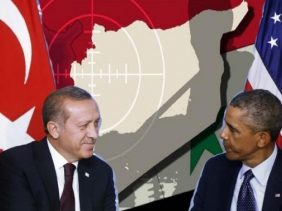

 Can you
Can you 